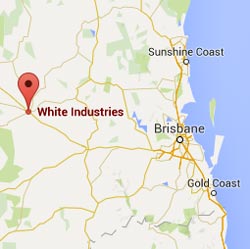Foundry Tech: Nickels & Alloys
Welcome to the final article in the series of Material Reviews that has been running for the last couple of years.
Nickel and its alloys, like the stainless steels, offer a wide range of corrosion and/or heat resistance. However, nickel can accommodate larger amounts of alloying elements; mainly chromium, molybdenum, copper, and tungsten in a solid solution than ferrous-based materials can. As a result, nickel-base alloys can be used in more severe environments and offer greater resistance to corrosion, pitting, crevice corrosion, intergranular attack, and stress-corrosion cracking (SCC).
Nickel and its alloys are widely used in the chemical processing industry, pulp and paper mills, flue gas desulfurization pollution control systems, petrochemical, and refining applications.
These alloys have well-known commercial names, such as Inconel, Incoloy, Monel and Hastelloy.
Nickel alloys are categorized into the following families:
- Commercially Pure Nickels
- Nickel-Copper
- Nickel-Chromium-Iron
- Nickel-Chromium-Molybdenum
- Nickel-Molybdenum
Commercially Pure Nickels
The most common application for commercially pure nickel alloys is for use in caustic soda and chemical processing with caustic, such as alumina plants when digesting the bauxite, which is the first step in producing alumina. These alloys are ductile and tough and show good corrosion resistance in natural freshwater and de-aerated, non-oxidizing acids.
Microstructure of Commercially Pure Nickel
Nickel-Copper
This family is well known as Monel family. This family of alloys with around 30% copper, is strong and tough, and are resistant corrosion in brine, sulphuric and other acids, and are immune to stress corrosion cracking. When alloyed with small amounts of aluminium and titanium, they can be work-hardened as well as age-hardened.

Microstructure of Nickel-Copper (Monel)
Nickel-Chromium Iron
This family contains alloys such as Inconel 600 and is used for elevated temperature fittings. It can handle hot corrosives or corrosive vapours under moderately oxidizing conditions.

Microstructure of Nickel-Chromium-Iron (Inconel 600)
Nickel-Chromium-Molybdenum
This large family includes some alloys by the tradename Hastelloy and is typically alloyed with 15-30% chromium and 10-15% molybdenum. These alloys are used extensively in chemical processing, pollution control, and waste treatment plants. They have excellent corrosion and heat resistance. Another well-known member is inconel 625, which has excellent scaling resistance up to 1000°C. It is used extensively in heat exchangers, bellows, expansion joints, exhaust systems, fasteners, and quick connect fittings.

Microstructure of Nickel-Chromium-Molybdenum
Nickel-Molybdenum
This family contains more of the hastelloy alloys, notably hastelloy B, and were developed for handling hydrochloric acid in all concentrations up to the boiling point, and in reducing environments. They typically contain 25-35% Mo

Microstructure of Nickel-Molybdenum
We hope you’ve gained something from this series of articles. The range of alloy systems we’ve examined are wide and varied; there is something available for every application. Please contact White Industries for a material solution.




